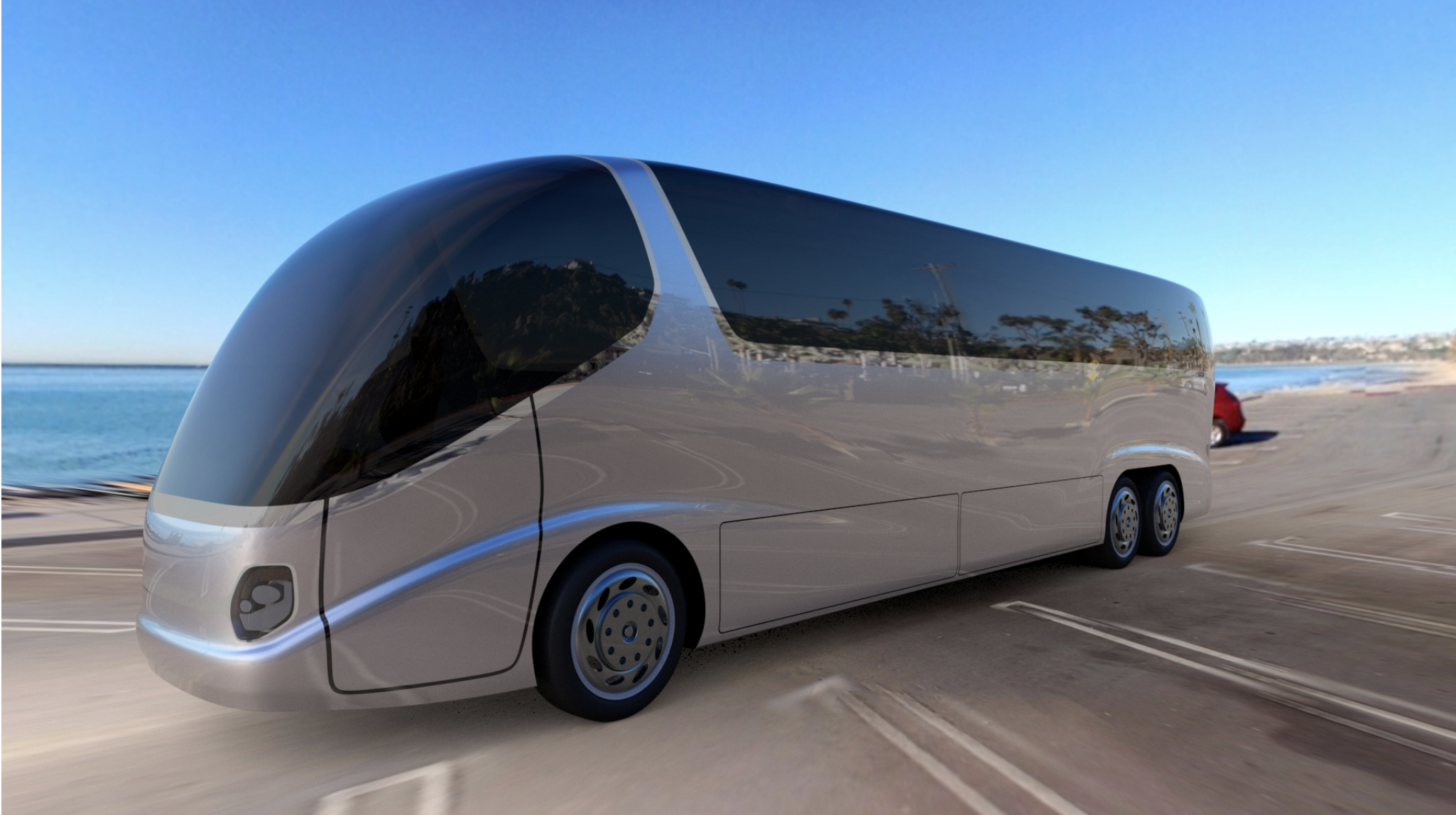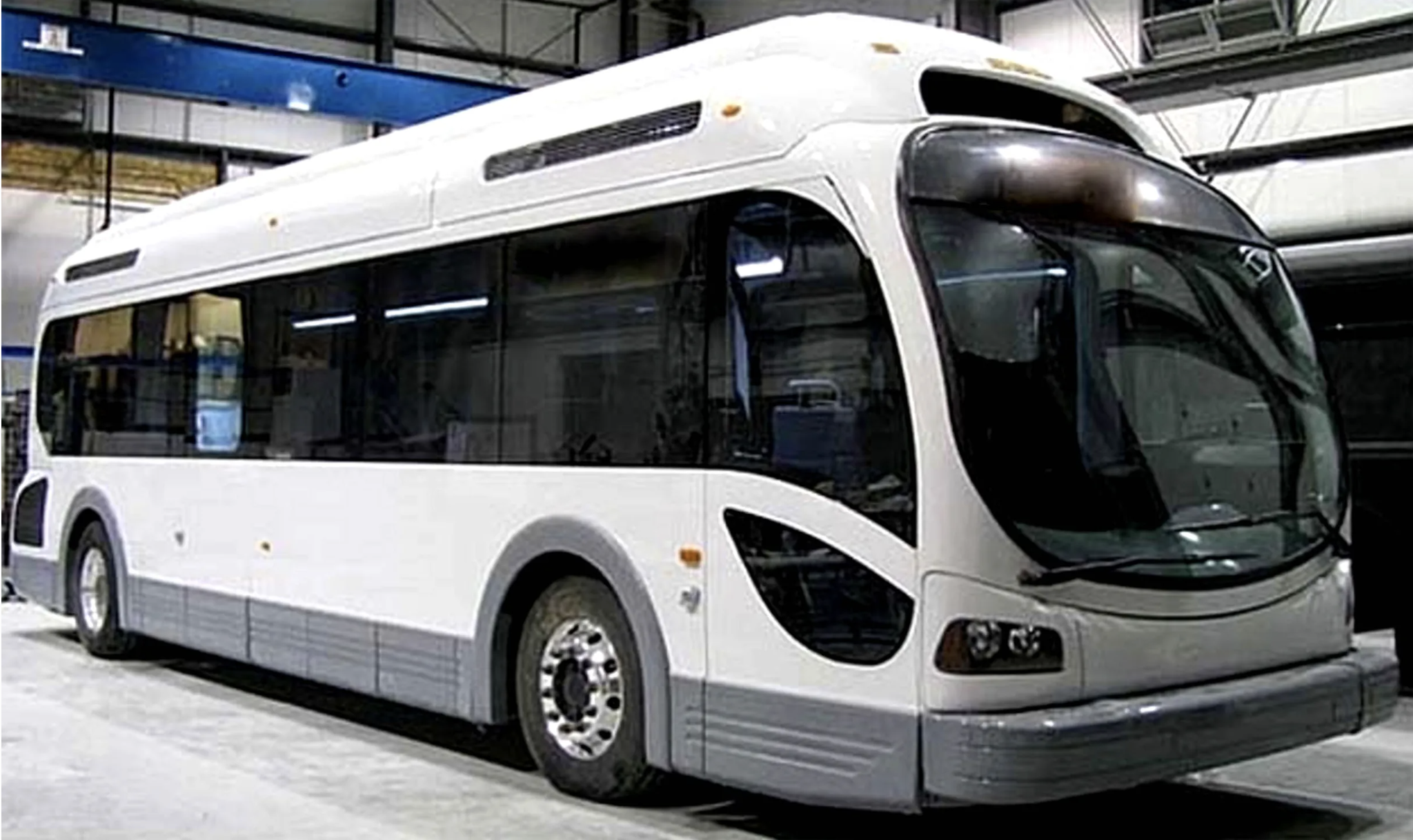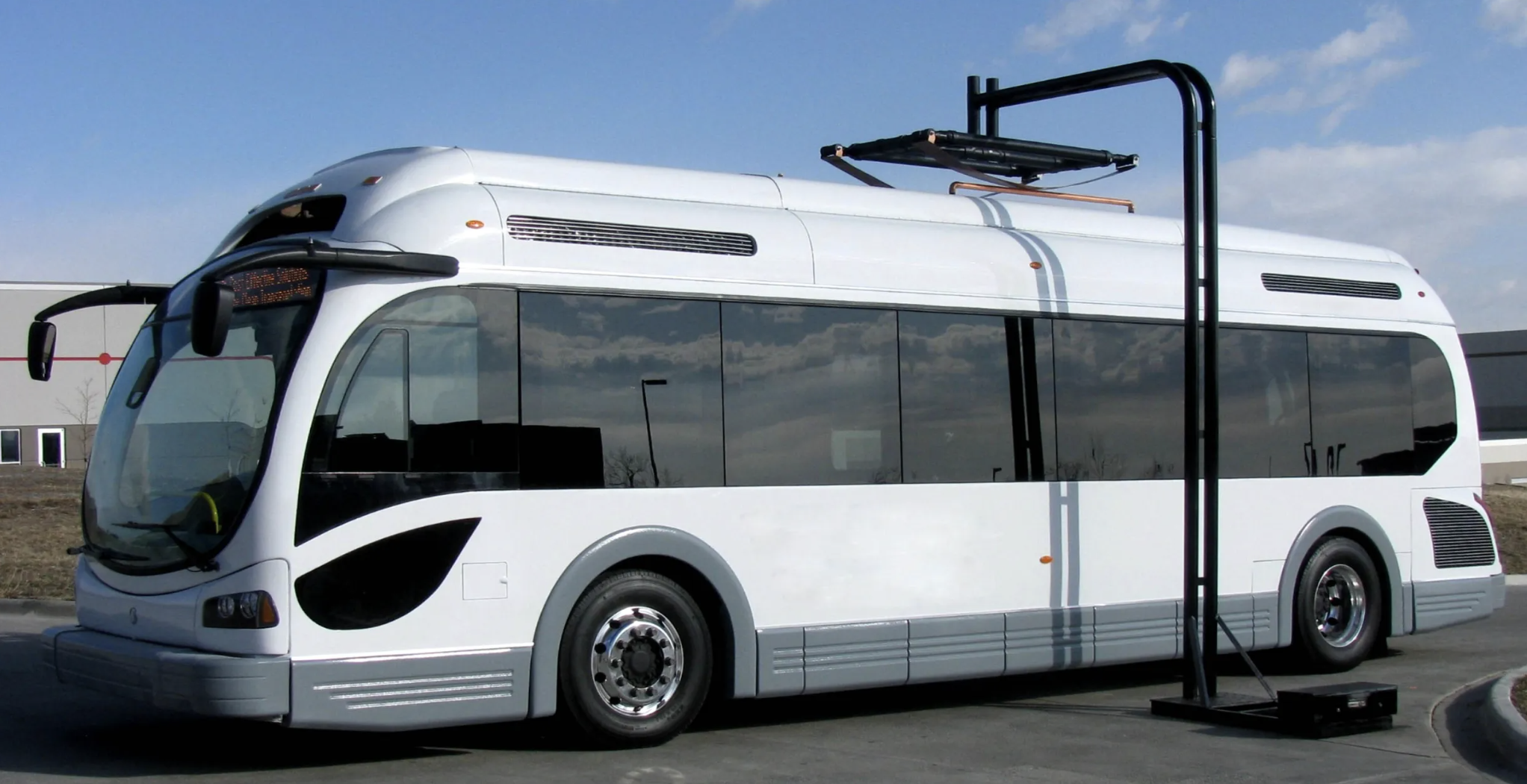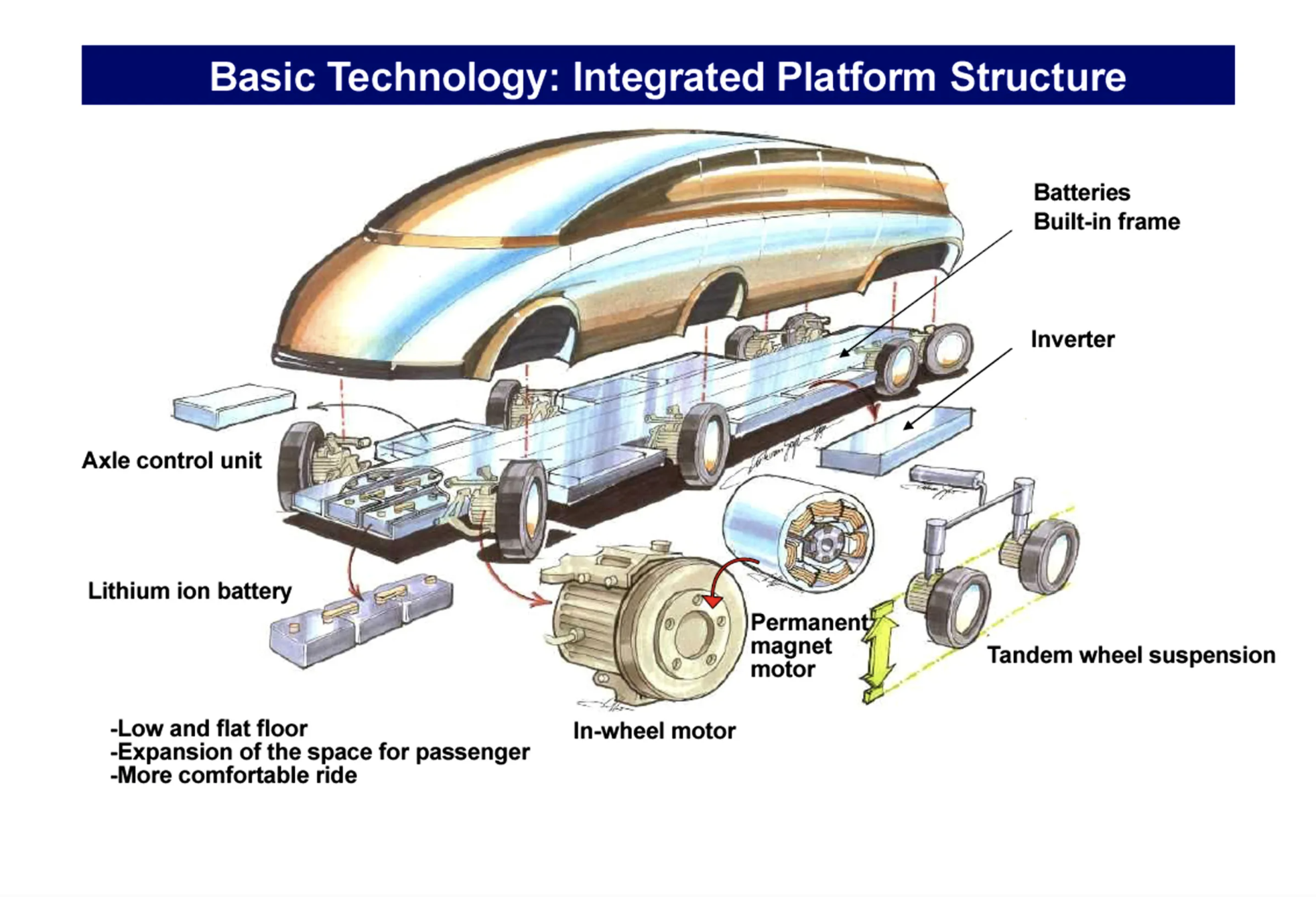
Mega Engineering Vehicle designs and engineers Electric Bus Vehicles with the most advanced technology in the world.
Electric Bus
The MEV Electric Bus is an all-electric bus model manufactured by Mega Engineering Vehicle powered with its self-developed Lithium battery. As for the power system of this pure electric bus, MEV self-innovated in-wheel motor drive system which realizes the function of in-wheel motor drive and hub redactor.
The aim is to provide a zero local emission mass public transportation bus system with high passenger capacity and no overhead line. The concept supports same operating timetable and frequency as line operated with diesel buses, trolleybuses and operating conditions of Bus Rapid Transit systems. The following aspects have been considered to comply with a sustainable mobility approach:
Use as little as possible raw material along the life cycle: The lithium battery technology has been selected accordingly.
Energy efficiency: High passenger capacity, low vehicle weight (small battery), conductive energy transfer and grid connection with peak shaving Safety and health: Low emission of radiation Non-ionizing radiation during energy transfer at bus stops (conductive connection) and battery technology. Zero local emission of particles. Low noise and visual impact,
The energy is collected along the route at some dedicated bus stops (every 3rd or 4th bus stops) while people are disembarking and embarking. Thus, there is no impact on the timetable. The automatic electric connection is made from the top within 1 second while the bus is stopped at the bus stop. Than charging is made at high power (400 kW on the demonstrator) during the 15 seconds the door remains open. At the terminal, the battery is topped up within 3–4 minutes.
According to the line profile (total length and altitude) and service (frequency), the Flash Feeding Station (FFS) are distributed along the line at some (each 3rd or 4th bus stops – roughly 1.5–2 km) intermediate bus stops. At each end of the line, the recharge is performed by the Terminal Feeding Station (TFS).
FFS: The Flash Feeding sub-Stations are provided with energy storage to shave the peak of power on the grid required to charge the bus at the intermediate bus stops. As power is limited by the energy storage, the sub-station is connection to the low voltage grid.
TFS: The Terminal Feeding Sub-Stations is used to charge the bus at the terminal.
DFS: The Depot Feeding Sub-Stations are used to compensate the energy required by the bus from Depot to the line of service.




















